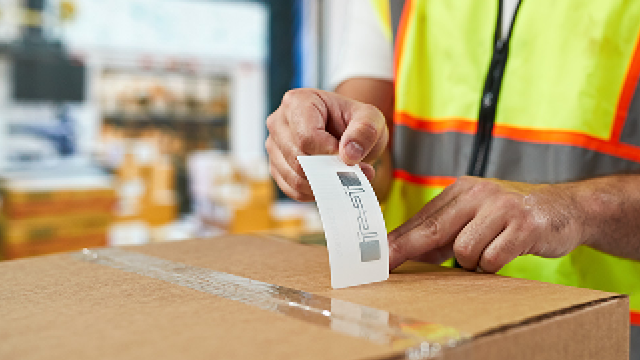Revolutionise the Food Supply Chain with RFID Technology
Help your clients comply with regulations and meet consumer demands for traceability in innovative ways with this familiar technology.
BlueStar's diverse portfolio offers unparalleled access to premium products and services that drive business growth and success. From state-of-the-art hardware to advanced software solutions, our portfolio is designed to empower businesses with the tools they need to thrive in today's competitive landscape.
Our vertical-based content focuses on different industry technologies, solutions, and insights.
A true VAD offers top-notch pick, pack and ship services, and provides programs and services that add value to the distributed products that increase their value or worth.
The BlueStar DifferenceRFID provides new visibility, traceability, and efficiency.
No merchant wants to lose customers due to not having the items they want to buy. Today’s omnichannel consumers know they have other options, and they won’t be loyal and wait while a merchant restocks or reorders. Furthermore, it may be difficult for merchants to win that loyalty back. Research from Streetspotr found that 91 percent of German consumers are unwilling to engage with a store after just one out-of-stock experience.
Fortunately, technology solutions providers can implement systems allowing merchants to avoid these situations. Solutions you offer can automatically help the merchant eliminate or reduce out-of-stocks.
How to Reduce Out-of-Stock Items
Automating data collection and increasing inventory visibility is the key to reducing costly out-of-stocks for your merchants. Manual processes are slow, prone to error, and don’t allow merchants to make split-second calls on whether they can fulfil an order or make a sale. RFID technology, on the other hand, has that potential. Utilising an RFID solution integrated with the merchant’s point of sale (POS) system and e-commerce platform is the best way to create an accurate, real-time view of inventory.
RFID at the item level allows automatic updates to inventory when a merchant makes a sale. Furthermore, if an item is out of stock in one location, the merchant has visibility into whether it’s available at another store or in the e-commerce fulfilment centre, so they can save the sale by offering click-and-collect or home delivery.
RFID can also help merchants manage returns, informing all staff that an item is back in stock for immediate, efficient tracking. When items are received from suppliers, sold to customers, or returned, scanned RFID tags will update inventory tracking systems quickly and accurately.
In addition to keeping retailers informed of what’s in inventory overall, RFID can also inform staff of what’s on the floor. When items are tagged with RFID chips, an employee with an RFID reader can walk through the aisles for a quick count and generate a list for replenishment – much more efficiently and accurately than traditional, manual processes. When merchandise is on display, it can increase sales. Moreover, retailers can utilise this solution for physical inventory counts, saving 25-50 percent in the costs of using a contractor for inventory and eliminating the time necessary to check their work.
Streamline Reordering and Shipment Tracking
The solution you provide can also enable retailers to use the data RFID collects to simplify other processes. When their inventory management system allows them to set thresholds that trigger reordering, RFID technology can update the system automatically so it can generate a purchase order. This type of solution will ensure orders are placed on time, taking lead times and shipping into account so that in-demand items aren’t out of stock.
Additionally, RFID technology is valuable for tracking shipments throughout the supply chain. RFID can enable data collection from hundreds of items as they pass through a dock door or at a port. Logistics companies that share this information with retailers can help them plan promotions and respond if shipments are delayed, taking action to ensure the merchandise their customers want is available.
It’s Time for Something New
Paper-based inventory tracking systems have limited retailers’ inventory visibility, led to errors and poor customer experiences, and required labour that, for many businesses, is now in short supply. RFID can replace traditional processes, boosting accuracy and efficiency. Furthermore, customer satisfaction increases when consumers know they can count on the retailer to have the merchandise they need in stock.
Show clients RFID’s potential for making out-of-stocks a thing of the past.

Help your clients comply with regulations and meet consumer demands for traceability in innovative ways with this familiar technology.

RFID solutions give T&L operations visibility, track-and-trace capabilities, efficiency, and accuracy that mitigate losses, control costs, and...

The fast-food industry is under increasing pressure to adopt more sustainable practices. RFID technology could be the solution.
